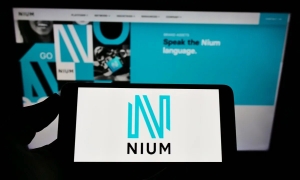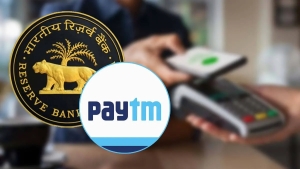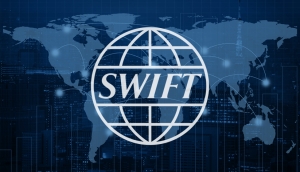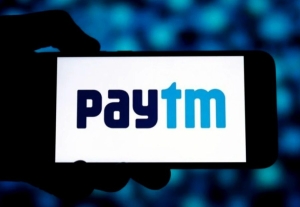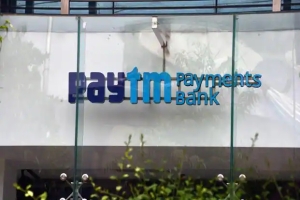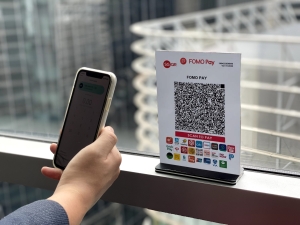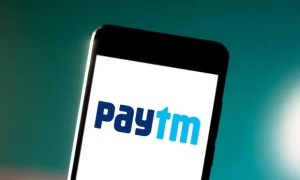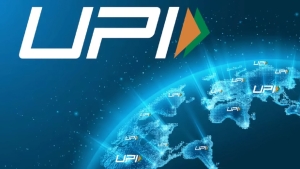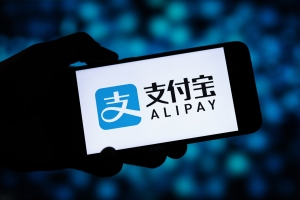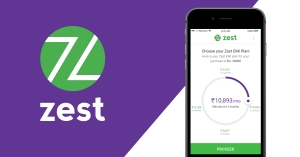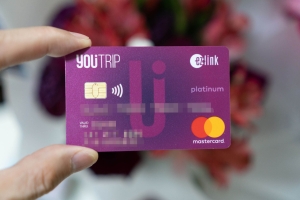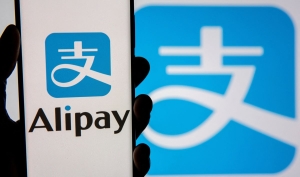Although the narrative in the financial industry is that digital is better, that is not always the case. Many rural economies across Asia operate on a largely informal and cash basis. A few factors are driving this. Firstly, there is often a lack of infrastructure to support cashless payments, such as limited internet access or banking services. Secondly, the rural populations often have a general distrust or lack of familiarity with digital payment systems. Additionally, the informal nature of many businesses in rural areas lends itself to cash transactions, which are perceived as more straightforward.
While the buy now, pay later (BNPL) concept has proven immensely popular with consumers worldwide, developing a sustainable business model as a BNPL focused fintech is a challenging endeavor. For that reason, it is always noteworthy when a BNPL firm reaches the profitability milestone. The Philippines’ Billease, founded in 2017, appears to have done so in 2023.
Vietnam is one of the most promising markets for fintech in Southeast Asia, with the payments segment continuing to lead the way. While talk of Vietnam going truly cashless is premature, there is a steady transition to digital payments in the country. Data compiled by the State Bank of Vietnam show that non-cash payment transactions increased by 63.3% in volume and 41.45% in value in January, compared to the same period in 2023. Many Vietnamese banks now have over 90% of their transactions conducted via digital channels.
Ant International’s global expansion efforts have grown increasingly strategic since the launch of its Alipay+ and its pivot to boosting interoperability among e-wallets in Asia. While it is difficult to measure the financial success of these efforts, the growth of Ant’s international payments network in the last 18 months has been impressive and the company has smartly pared back its presence in certain markets due to geopolitical pressures. With international travel having recovered to pre-pandemic levels, Alipay+ likely has significant room to grow, especially in neighboring countries.
Singapore-based payments fintech Nium has been busy expanding internationally as it seeks to put itself in the most favorable position possible ahead of a planned IPO in 2025. In recent months, Nium has expanded on multiple continents, from South America to different parts of Asia.
It has been a rollercoaster seven weeks for India’s preeminent fintech Paytm, which on January 31 was accused by the Reserve Bank of India (RBI) of “persistent noncompliance.” To be precise, it was Paytm Payments Bank that the RBI named, and it is the payments unit of the company that ceased to exist as of March 15. The good news for Paytm is that the RBI’s crackdown on its payment bank is not a lethal blow – and was never intended as such.
With funding for fintech startups having fallen precipitously from the days of ultra-low interest rates and a focus on growth at all costs, a reality is setting in: Disrupting the giants of incumbent financial services is no easy task. In many cases, it has proven elusive.
India’s United Payments Interface (UPI) payments rail is the most successful initiative of its kind. Domestically, UPI has achieved a dominance that no other payments rail is likely to surpass. According to a report by PwC, it is projected that daily UPI transactions will reach 1 billion by FY 2026-27, representing approximately 90% of India's non-cash transactions. 2024 started with UPI transactions processed in January reaching a record high of INR 18.41 trillion. Given UPI's success, India has sought to expand its footprint internationally and in the past few years it has become available in a number of countries from the United Arab Emirates and Bhutan to the UK and France. Yet questions remain about whether UPI can serve as a foundational platform for digital payments outside of India.
It increasingly appears that India’s fintech unicorn Paytm has a way forward from the regulatory pressure it is facing, but the company will have to part ways with its payments bank and restructure accordingly. To that end, India's Financial Intelligence Unit (FIU) on March 1 imposed a penalty of 54.9 million rupees (US$662,565) on Paytm Payments Bank for violations in reporting illegal money routed through its accounts. Given that Paytm overall has a market capitalization of almost US$3.3 billion, the fine itself is manageable, but the loss of its payments bank will require that the company rejig its operations to remain competitive.
Both Razorpay and Paytm are Indian fintech unicorns that have at different times struggled with mercurial regulators, but that’s about where the similarities end. Razorpay has focused only on the B2B segment, while Paytm has tried to gain a foothold in both retail and non-retail payments. While both companies have relied heavily on venture capital investment, Razorpay has very little, if any exposure, to China in this regard, while Ant Group’s stake in Paytm is coming under increasing scrutiny. With Paytm’s payments bank in mortal danger and Razorpay preparing to move its domicile from the U.S. to India while planning an IPO, the two fintech unicorns are both at inflection points. However, just one of them is ascendant.
The Reserve Bank of India’s (RBI) harsh crackdown on Paytm has shaken up the subcontinent’s fintech sector. If Paytm were to lose its payments bank due to the RBI’s directives, not only would the future of India’s largest fintech look more uncertain, there also could be unpredictable knock-on effects that reverberated throughout the industry. While the RBI’s move initially appeared to be abrupt, recent media reports suggest that the regulator had issued multiple warnings to the company over dealings between its payments bank and its payments app over the past two years that were not heeded.
Long a cornerstone of the business of Indian fintech giant Paytm, the company’s payments bank may have entered its twilight. While the Reserve Bank of India (RBI) has previously barred the payments bank from onboarding new customers, this new directive issued on January 31 is more comprehensive and foreboding. It appears the payments bank will no longer be operational after February 29, with just a few exceptions. India's central bank said it took the action due to "persistent non-compliances and continued material supervisory concerns in the bank” – which it did not specify.
Singapore-based payments firm FOMO Pay has been expanding internationally on several continents. The company, which is a partner of Ripple, recently received a Money Service Operator license for Hong Kong and last week announced its expansion into Africa. It also recently secured a partnership with Mastercard and Z Bank.
India’s most prominent fintech unicorn has steadily improved its financials in recent years in a push to reach profitability sooner rather than later. In the October to December period, Paytm posted an operating profit – which the company defines as core profit before cost of employee stock options – for the fifth consecutive quarter. The figure was 2.19 billion rupees, a significant improvement over 310 million rupees during the same period a year earlier. Consolidated revenue, meanwhile, increased 38% to 28.5 billion rupees, with its payments business contributing 61% to the total. Despite these solid numbers, the company could face some headwinds in the months ahead.
We recently wrote about how Google Pay has defied the odds in India, a crucial fintech market where both American tech and credit card giants have struggled to carve out a niche. The Google Pay app continues to hold a roughly 35% market share of the paramount homegrown payments rail United Payments Interface (UPI) in India, while WhatsApp Pay and Amazon Pay each have less than 1% and PayPal is absent altogether.
While regulatory uncertainty continues to hang over its domestic operations, Ant Group is not letting that get in the way of its ambitious global expansion of which the Alipay+ platform is a key part. The number of partnerships/tie-ups between Alipay+ and various entities is growing briskly and increasingly spans the whole of Asia, from Sri Lanka to Korea to the United Arab Emirates as well as Europe the United States.
One of the most promising segments of digital financial services in India is remittances. Unlike traditional banking, it is not completely dominated by incumbents, and the massive Indian diaspora population ensures that demand will be robust for years to come. 2023 was another big year for Indian remittances – though not as big as 2022.
Singapore-based multicurrency wallet YouTrip announced on January 3 that its users can now hold up to S$20,000 (US$15,025) in their e-wallets and have an annual spending limit of S$100,000, up from S$5,000 and S$30,000, respectively. The new maximum limits are the same as those recently adjusted upward by the Monetary Authority of Singapore (MAS).
Big Tech considers India an important market when it comes to search, social media, messaging and e-commerce. Fintech, however, is another story.
After a long moment in the sun, buy now, pay later (BNPL) has lost some of its luster. That’s not to say it will fade away. Far from it. In fact, many deep-pocketed fintechs and prominent incumbents in advanced economies have introduced the service because consumers like interest-free installment payments. However, pure-play BNPL firms that are essentially one-trick, loss-making ponies are in varying degrees of trouble. In the case of India’s ZestMoney, once a high flyer in the subcontinent’s erstwhile red-hot BNPL segment, the trouble seems to be terminal – and the company will reportedly throw in the towel at the end of this month.
Ant Group has an ambitious international expansion strategy with Asia Pacific at its core. However, one of the largest markets in the region is increasingly not part of Ant’s vision. Suffice to say that when Ant was ramping up expansion in Asia a few years ago, it did not foresee geopolitical tensions with India impacting its investments in the subcontinent, a market the Chinese tech giant once saw as very promising. But the business environment for Chinese companies in India is likely to remain highly challenging for the foreseeable future.
By several metrics, GCash is the most successful Philippine fintech. As of May, it claimed to have 81 million users (in a country of about 114 million) while the company said last year that it achieved profitability three years ahead of schedule. That said, GCash is not resting on its laurels and is stepping up both international expansion and a push into the B2B market.
It was not long ago that we were wondering if the Melborne-founded and Singapore-headquartered fintech unicorn Airwallex had scaled back its ambitions, which historically have been lofty. It is safe to say that is not the case. Indeed, Airwallex continues to push into new markets aggressively, including in the past six months both Israel and Mexico.
We have been writing for a while now about the potential for credit cards to capture market share in India, irrespective of the trajectory of buy, now pay later (BNPL) and e-wallets. In a nutshell, there is nothing quite like a credit card when it comes to cashless payments: the potential for rewards, the potentially significant credit limit, and in some cases, the prestige of holding a specific card. And then there is the bonus that paying off the balance promptly helps one build a solid credit profile over time. Even though India’s credit card penetration is estimated at just 5.5%, in absolute terms, that’s still about 77 million people because the subcontinent’s population is 1.4 billion. So even at that low level of penetration, India has a larger credit card market than all of France or the UK.
Singapore-based fintech startup YouTrip is a now officially an anomaly: It managed to raise US$50 million in what is a relatively challenging period for fintech funding given high interest rates, an uncertain global economy and persistent geopolitical tensions in different parts of the world. In an interview with Nikkei Asia, CEO Caecilia Chu said YouTrip, together with a local financial partner, would launch its multicurrency wallet in Malaysia in a few months’ time while simultaneously beefing up its presence in Singapore and Thailand.
After years of losing money, Paytm has turned things around in the past two years. A disappointing IPO on the eve of a long-overdue slowdown in inflated tech stocks and valuations was a wake-up call for the company to focus on profitability instead of growth in myriad verticals. In the June quarter, India’s most prominent fintech showed some promising signs, especially in terms of loan growth, but it also faces rising competition and lacks a banking license that would allow it to lend directly to customers.
The fragmentation of e-wallets in Asia poses a challenge for any company trying to build a payments rail that can work smoothly throughout the region. With the exception of China, where a duopoly of Alipay and Tenpay still prevails, most Asian countries have dozens, if not tens of dozens, of digital payment methods. This holds true for the richest countries in the region like Japan and Singapore, as well as developing nations in South and Southeast Asia. For this reason, we are carefully observing the progress of Ant Group’s Alipay+ initiative in the region to see if it can achieve a breakthrough.
In September 2021, Ascend Money became Thailand’s first fintech unicorn, achieving a US$1.5 billion following a US$150 million funding round. While we have learned to take fintech valuations with a few grains of salt, Ascend Money does have a strong ecosystem built on its TrueMoney wallet, which says it serves more than 50,000 users through its platform and 88,000 “agents.” The TrueMoney platform and the strategic investment that Ascend Money has from Ant Group could give it an edge as it expands internationally.
For an e-wallet competing against aggressive digital banks, GCash is more than holding its own. The Alibaba-backed company has achieved impressive scale in a competitive, fast-growing market: 81 million active users and 2.5 million merchants and social sellers as of May, and without burning an unacceptable amount of cash. What’s more, according to the company’s leadership, it became EBITDA profitable three years ahead of schedule. The company is now preparing for an IPO. It is just a question of when.
This commentary was written in collaboration with Banking Circle.
India’s United Payments Interface (UPI) real-time payments system has transformed how Indians make payments, allowing them to easily transfer money instantly from one bank account to another: from a customer to a business, or between individuals. Since its 2016 launch, UPI has amassed 300 million users and 500 million merchants in a population of 1.4 billion and been a decisive factor in India’s embrace of cashless payments given its ease of use and interoperability.
More...
This commentary was written in collaboration with Banking Circle.
Taiwan’s e-commerce market has been growing steadily in recent years, buoyed by the pandemic-induced boom in online shopping but also due to rising trade ties between Taiwan and Southeast Asia. Per a research report commissioned by Amazon, the B2C segment is forecast estimated to grow 9% annually from 2021 to 2025, reaching NT$683 billion (US$23.2 billion). Companies including Taiwan’s own PChome and Momo as well as Shopee and Rakuten are all keen to tap into related market opportunities.
There is usually good reason to be skeptical these days about a loss-making fintech with a sky-high valuation, but India’s PhonePe – valued at US$12 billion – could be an exception to the rule. The company has fought its way to the top of the subcontinent’s massive UPI payments rail, edging out Google Pay and Paytm, is gradually building out a comprehensive digital financial services ecosystem and continues to raise eyewatering sums from investors at a time when the easy money no longer flows.
Southeast Asia’s largest platform companies all reported second quarter earnings recently. Some results were better than others, but Sea Group, Grab and GoTo all continue to struggle with the fundamentals. The latter two companies are not profitable, while Sea’s performance underwhelmed investors.
Japan’s megabanks are not the only Japanese financial services companies keen on growing their fintech footprint. The SoftBank spinoff SBI Holdings is a digital focused conglomerate with a securities division, a digital bank that is reportedly Japan’s largest by deposits, an asset management arm, an insurance business and a venture capital arm.





